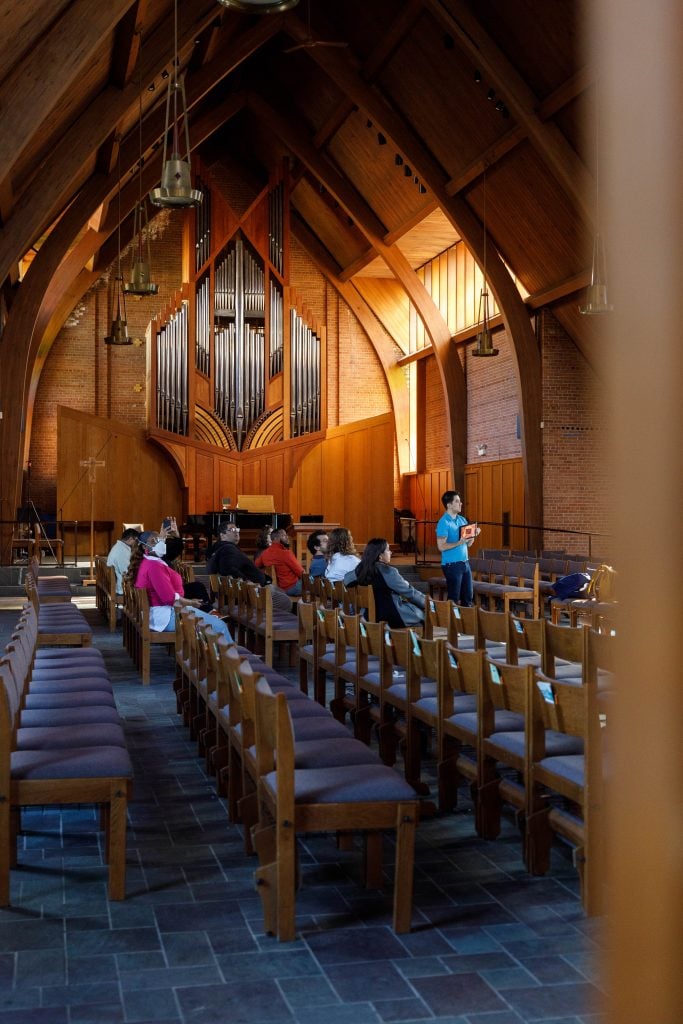Tool
Guide for Religious Site Visits
Use this site visit guide to support the learning experiences of groups that are being introduced to religious spaces and practices different from their own.
Overview
Visiting a religious or sacred site provides people with a visceral learning opportunity difficult to replicate by reading about a site or viewing pictures or images. This site visit guide is meant to help educators, civic leaders, and clergy support the learning experiences of groups who are being introduced to religious spaces and practices different from their own.
The following guidelines are meant as helpful tips for site visit organizers, in conjunction with the staff and leaders of a particular religious or sacred site, to design a visit that helps participants:
- learn about a particular religious or secular site and how its community utilizes it
- draw connections between their own religious or secular tradition and the beliefs, practices, and rituals of another religious or secular community
- understand the commitment to service and other shared values in another specific religious or secular community

An Example of a Site Visit
Suggested Components of a Site Visit
Here are some suggested components of a visit that can enhance the educational value of the experience. Be sure to coordinate with your contact at the site when planning your trip about your goals and expectations so that you are respectful of their community, practice, and space.
Welcome by Leader in the Community
A helpful way to begin a visit is with a welcoming address from a leader or member of the religious community. This individual should be able to welcome the group to the space, share a brief introduction to the history of the space, offer relevant facts about the community, and point to some key values of the particular religious community. Be sure that your host (or the proper faculty/staff member) outlines any special considerations to take into account while touring the space (maintaining silence, removal of shoes, etc.)
Tour of the Space
As the group prepares to tour the space, ask participants to consider the following questions as they proceed:
- What symbols or images do I see?
- What sounds or scents do I notice?
- What stands out to me?
- What aspects seem familiar?
- Unfamiliar?
- What activities are happening in this space?
Group Observation
As you conclude the visit, gather the group together in an appropriate area within the space or a separate meeting room. Review the questions you asked them to consider going into the tour. What did people notice as they were touring the space? What expectations did they have going into the tour and how did those expectations actually coincide with what they saw?

Interfaith Literacy and Shared Values
Ask your host from the community to share a personal overview of their religious tradition with the group and take questions from the attendees about what they have seen. You may want to ask them to focus on specific areas of focus, such as:
- What are the basic tenets of your religious tradition?
- What are the holy days associated with your religious tradition?
- What are the sacred texts in your religious tradition?
- Is prayer or meditation a part of your tradition?
- If so, could you share a common prayer or meditation from your tradition?
- What does your tradition teach about serving others?
- How does your community serve others?
- Could you please share a personal story about what values motivate you as a follower of this tradition?
Follow Up From Visit
As with any type of visit, make sure to express your thanks to the host site for their hospitality and time. Use your time afterwards to further the discussion and reflection started during the visit itself.
Post-Visit Formative Assessment:
- Ask participants to write a short paper or journal entry on the visit. You can use some of your original questions as a prompt, or you can ask them to focus on one aspect of the visit that stood out to them and ask them to explain why.
- For a more in-depth response, ask attendees to choose a value or tradition they learned about during the trip and how that particular value or activity is reflected in their own tradition.
- What common values or actions did they learn about during the trip? What did they learn from the visit that connected to their own personal commitment to a religious or secular tradition?
- Encourage everyone to continue to seek out visits to religious and sacred sites, either through a particular class or group, or on their own. Ask them to each personally identify different types of religious and sacred sites they would like to visit and learn more about.
